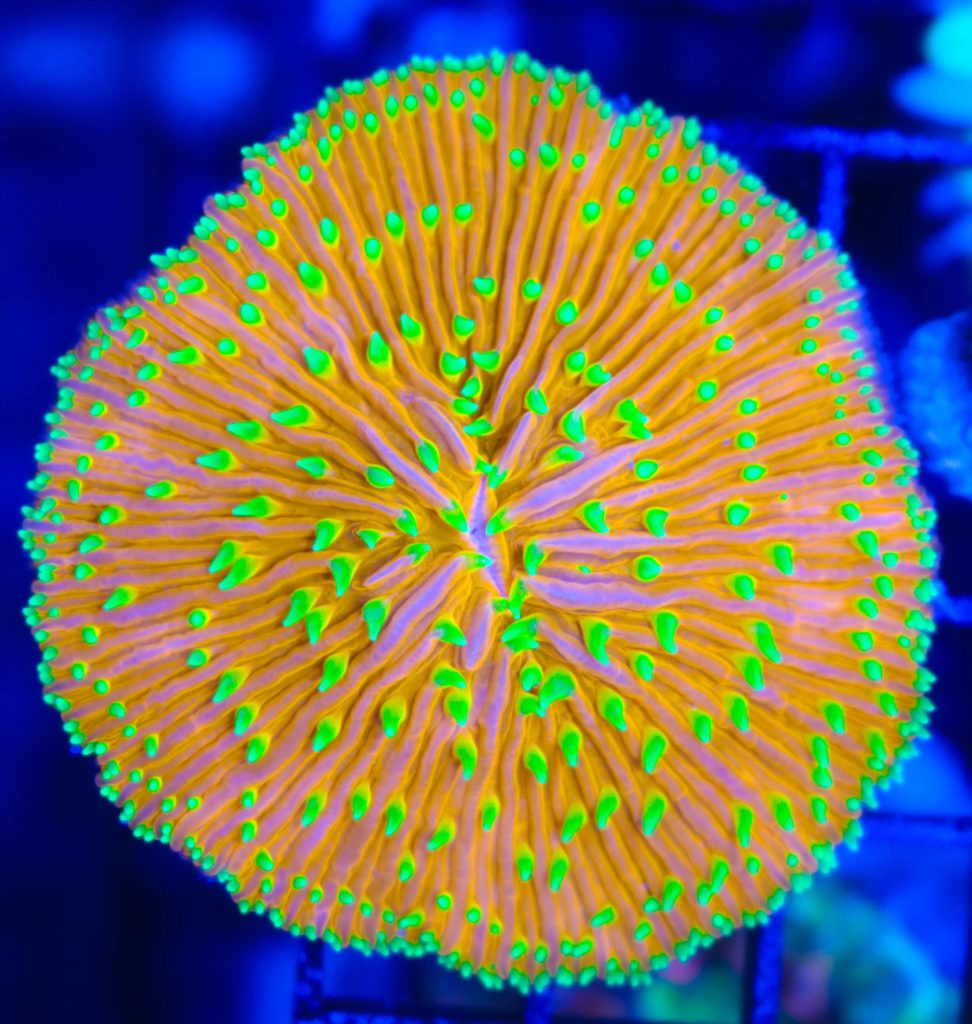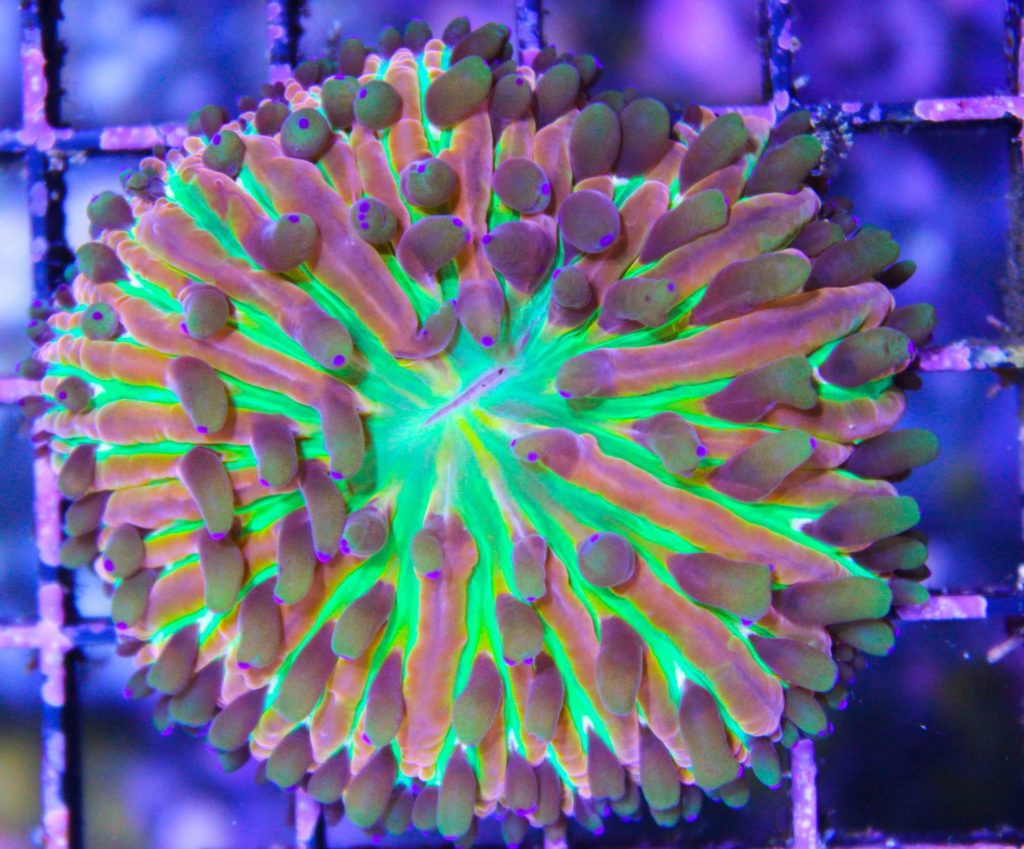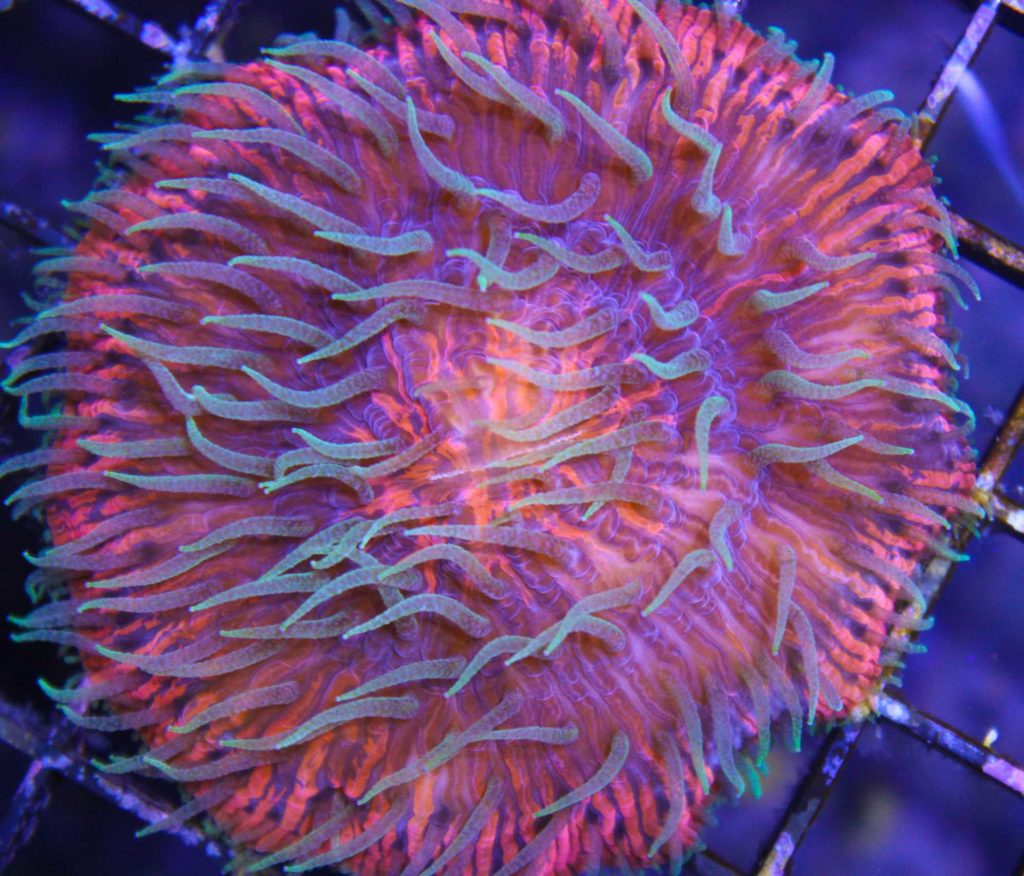
An extremely rare red variety of plate coral
Common Name: Plate Coral
Order: Scleractinia
Latin Name: Fungia fungites
Class: Anthozoa
Family: Fungiidae
Origin: Indo-pacific, Australia, Vietnam
Category: LPS
Care Level: Beginner
Temperament: Peaceful
Lighting: Low
Waterflow: Low-Medium
Placement: Sandbed
Colors: Various
Growth Speed: Slow
What Are Plate Corals?
The coral plate corals gets its name from unique and distinct like plate appearance. The name plate is commonly used in the reef keeping hobby to refer to several different corals from the family Fungiidae. Corals such as Fungia, Heliofungia, Diaseris, Cycloseris, and Lithophyllon are all usually simply referd to as plate coral. In total there are 13 different species that make up the family of Fungiidae. These corals occure as soiltary singular corals unlike many coral that grow as colonies. They usually have a sinle mouth and grow to resemble a plate.
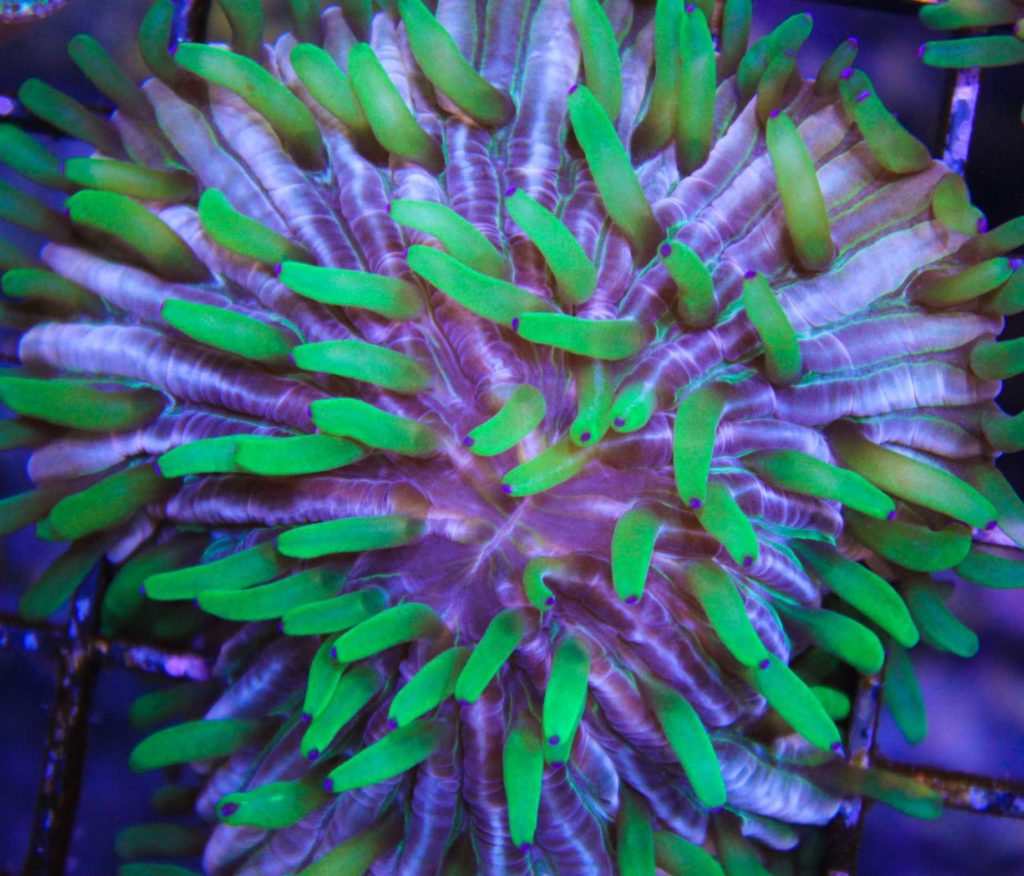
A unique green tentacle blue plate coral
Plate Coral Placement
Plates do best on the sand bed under par of about 100. You can place them on low rock work as well if it is flat and there is no chance of it falling over. You should not glue the bottom of plate corals as this can kill them. They don’t have a sting but they should not be placed directly in contact with any other corals. They do well under low to medium flow, you want to give them enough to keep their bodies clean of detritus but not so much that they risk flipping over as they can not flip them selves back and this will kill them in a few days.
Plate Coral Names
Unlike many other corals plate corals do not normally have trade names, we simply refer to them as plate corals. Or sometimes the color used to described them as well as terms like ultra and rainbow to distinguish the grade.
A stunning orange variety of plate coral
Plate Color & Size
Plate corals normally arrive 3-4”. In the wild they can grow up to 18” across ! This is rare in captivity and would take almost a decade to accomplish. Green plate corals are the most common in color and red are the most rare. Orange varieties are uncommon and when you have a plate with different body and tentacles colors it usually makes them more valuable because of their rarity. Three or more colors are considered rainbows and are highly sought after show pieces.
A super rare rainbow plate coral showing off four and almost five colors
Long Tentacle Plate Corals
Virtually the same in terms of care of as plate corals but they exhibit long tentacles. They are really unique and closely resemble torch corals without the sting. Clown fish will sometimes even mistake them for anemones and host them.

Special Care
Plate corals are generally easy to care for and have so special care requirements. All species of plates are photosynethic.
Plate Coral Growth & Fragging
Plates don’t grow very fast compared to most lps corals and corals in general. This is kind of a good thing because once they are large they do take up quiet a bit of space and they can not be fragged
Plate Coral Feeding
Plate corals love to eat ! We feed our vitalis LPS pellet but they will eat just about anything. Feeding is not necessary because they are photo synthetic but they do appreciate regular weekly feeding. Its also a lot of fun to watch them pull into their mouths and gobble it up
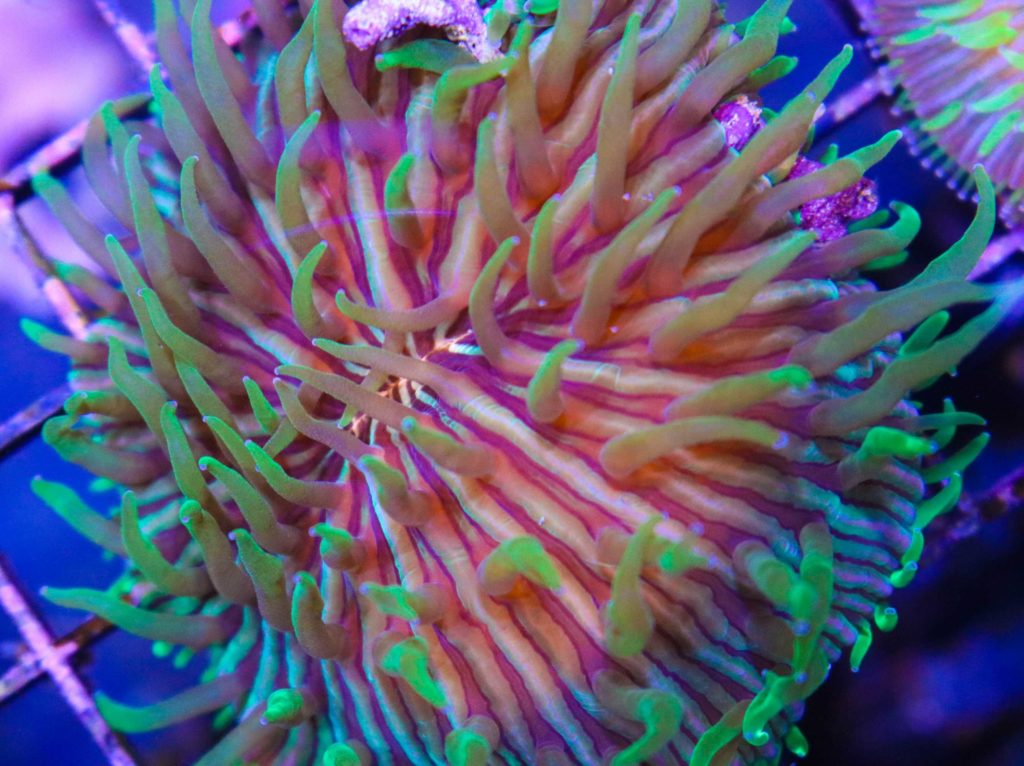 Water Chemistry
Water Chemistry
We always recommend keeping your aquarium within natural sea water parameters. This means salinity of about 1.026, calcium 450ppm , alkalinity of about 8 , magnesium 1400.
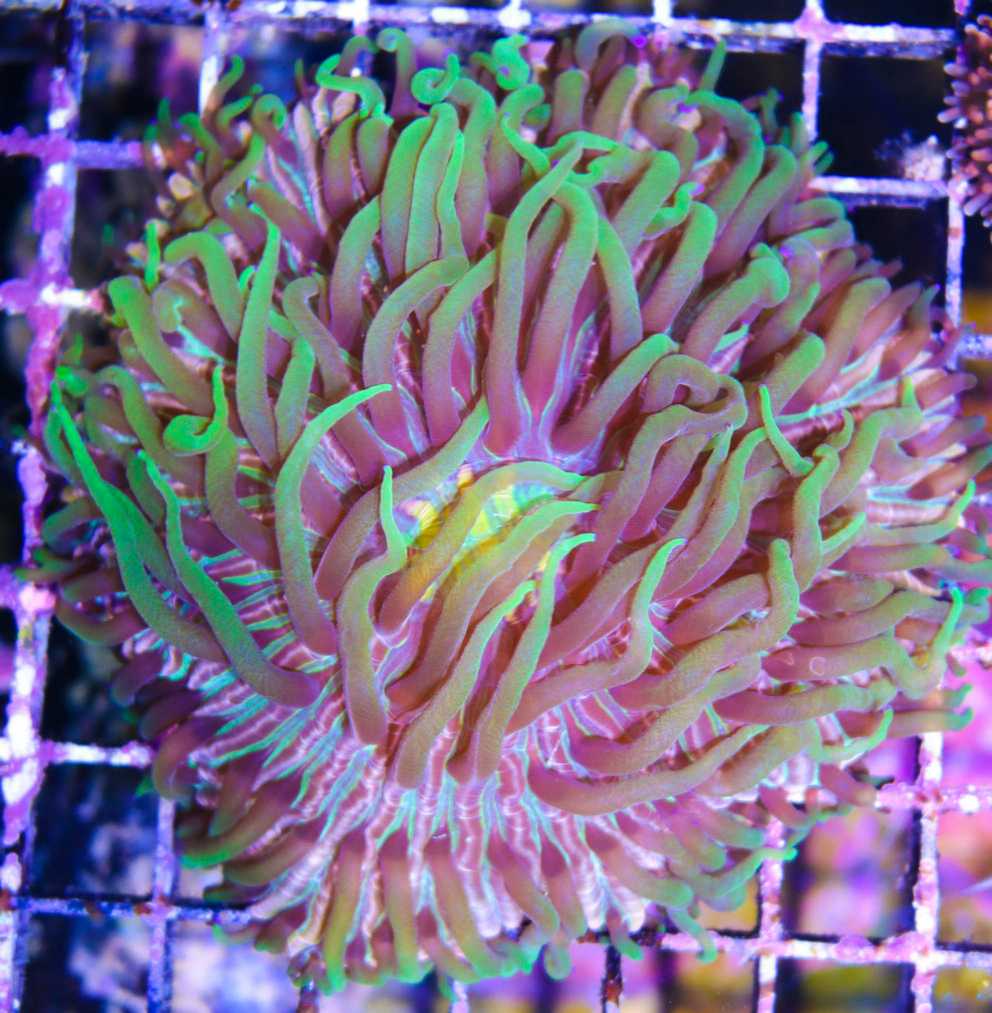
Dipping Plate Corals
Plate corals have no known pests its always good practice to dip them with coral rx or two little fishies revive coral dip before adding them your aquarium. You really should dip any corals you add to your tank.
Check out this video on how to dip corals
